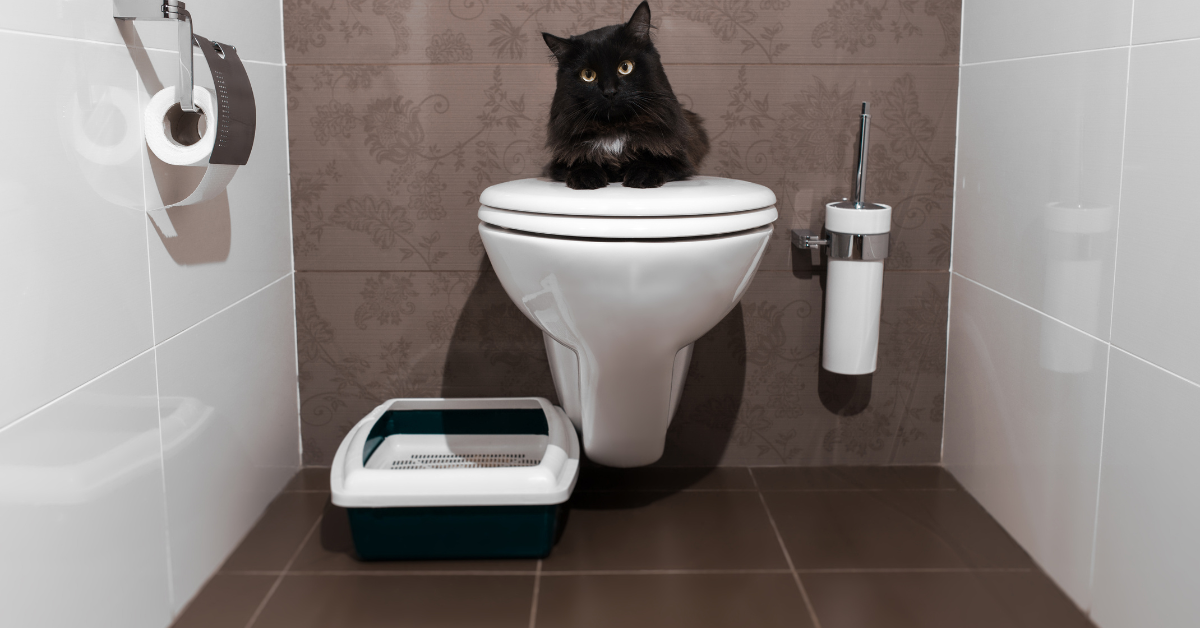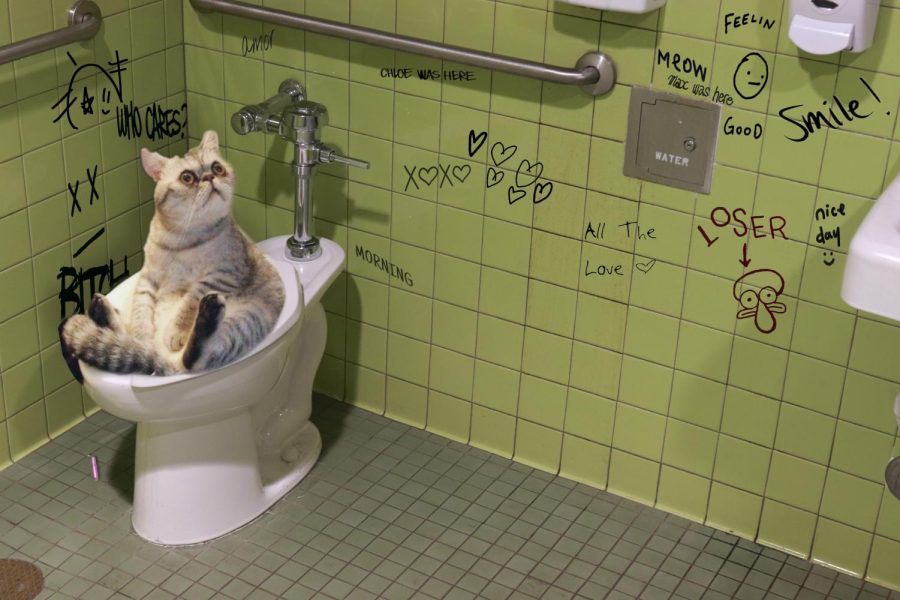Why Flushing Animal Waste Down the Toilet May be Harmful
Why Flushing Animal Waste Down the Toilet May be Harmful
Blog Article
Have you been trying to find information involving Why you should never flush dog poop down the toilet?

When it involves taking care of waste, specifically animal waste, many people frequently consider the practical alternative of flushing it down the toilet. However, this relatively simple option can have serious effects for the setting and public health. In this article, we'll discover why flushing animal waste down the toilet is a bad concept and give alternate approaches for appropriate disposal.
Intro
Correct waste disposal is crucial for keeping environmental sustainability and public health. While it might appear safe to flush animal waste down the commode, it can bring about numerous concerns, both for the atmosphere and human health.
Dangers of flushing pet waste
Ecological effect
Purging pet waste introduces damaging germs and pathogens into rivers, which can negatively influence marine ecosystems. These microorganisms can infect water sources and damage aquatic life, interrupting delicate environments.
Public health problems
Animal waste includes hazardous germs such as E. coli and Salmonella, which can present serious health and wellness dangers to people. Purging pet waste down the toilet can pollute water supplies, resulting in the spread of conditions and infections.
Alternatives to flushing
Instead of purging animal waste down the commode, there are several alternate disposal methods that are much more eco-friendly and hygienic.
Composting
Composting animal waste is a green way to dispose of it. By composting, raw material is broken down into nutrient-rich dirt, which can be used to feed yards and plants.
Land fill disposal
Dealing with pet waste in a garbage dump is an additional choice. While not as eco-friendly as composting, it is a safer alternative to flushing, as it stops the contamination of water sources.
Family pet garbage disposal systems
There are specialized animal garbage disposal systems available that securely and hygienically get rid of pet waste. These systems usually utilize enzymes to break down waste and get rid of odors.
Steps to correct animal garbage disposal
To make certain appropriate disposal of pet waste, follow these steps:
Scooping and nabbing waste
Consistently scoop and bag animal waste utilizing eco-friendly bags. This prevents waste from infecting the atmosphere.
Making use of marked waste containers
Dispose of bagged animal waste in assigned waste containers, such as garden compost bins or land fill bins. Stay clear of flushing it down the bathroom at all prices.
Cleansing can and family pet areas routinely
Consistently tidy litter boxes and animal locations to stop the buildup of get more info waste and germs. Use pet-safe cleaning items to preserve health.
Benefits of proper disposal methods
Taking on appropriate disposal methods for pet waste offers several benefits:
Reduced environmental pollution
Appropriate disposal methods lower the risk of environmental pollution, safeguarding rivers and environments from contamination
Reduced danger of water contamination.
By staying clear of flushing animal waste down the toilet, the danger of water contamination is considerably minimized, guarding public health.
Enhanced hygiene and hygiene
Correct disposal approaches advertise far better sanitation and hygiene, producing a more secure environment for both human beings and pets.
Final thought
To conclude, purging pet waste down the toilet is dangerous to the environment and public health. By adopting different disposal approaches and complying with appropriate waste administration methods, we can lessen the adverse effect of pet waste and contribute to a cleaner, much healthier world.
What To Do With Dog Poo – The Do's And Don'ts Of Disposing Of Faeces
Dog poo bins
Some councils provide dedicated dog waste bins in popular dog-walking areas that can take dog poo that has been bagged but you can legally dispose of dog waste in any public litter bin, as long as it is securely bagged. This also applies to your wheelie bin at home.
Do not flush
Water companies do not recommend flushing dog faeces down the toilet because certain parasites can survive the water processing treatment and are potentially harmful to humans. You should also never consider flushing dog poo that has been bagged down the toilet as the bags will not break down and instead create severe blockages in the sewage system.
In the woods
The Forestry Commission promotes a ‘stick and flick’ method for dealing with waste in the woods. This means finding a stick and using it to flick any poo from off the path so that it is out of the way of other walkers. You could also bury it as long as it is not in an area where there might be livestock.
Livestock
Parasites found in dog poo can be transmitted to livestock if they inadvertently eat infected faeces that has been left on grazing land. This could result in the death of sheep or abortion in cattle so you should always make sure you pick up your dog’s waste in fields where livestock could be present.

Consistently tidy litter boxes and animal locations to stop the buildup of get more info waste and germs. Use pet-safe cleaning items to preserve health.
Benefits of proper disposal methods
Taking on appropriate disposal methods for pet waste offers several benefits:
Reduced environmental pollution
Appropriate disposal methods lower the risk of environmental pollution, safeguarding rivers and environments from contamination
Reduced danger of water contamination.
By staying clear of flushing animal waste down the toilet, the danger of water contamination is considerably minimized, guarding public health.
Enhanced hygiene and hygiene
Correct disposal approaches advertise far better sanitation and hygiene, producing a more secure environment for both human beings and pets.
Final thought
To conclude, purging pet waste down the toilet is dangerous to the environment and public health. By adopting different disposal approaches and complying with appropriate waste administration methods, we can lessen the adverse effect of pet waste and contribute to a cleaner, much healthier world.
What To Do With Dog Poo – The Do's And Don'ts Of Disposing Of Faeces
Dog poo bins
Some councils provide dedicated dog waste bins in popular dog-walking areas that can take dog poo that has been bagged but you can legally dispose of dog waste in any public litter bin, as long as it is securely bagged. This also applies to your wheelie bin at home.
Do not flush
Water companies do not recommend flushing dog faeces down the toilet because certain parasites can survive the water processing treatment and are potentially harmful to humans. You should also never consider flushing dog poo that has been bagged down the toilet as the bags will not break down and instead create severe blockages in the sewage system.
In the woods
The Forestry Commission promotes a ‘stick and flick’ method for dealing with waste in the woods. This means finding a stick and using it to flick any poo from off the path so that it is out of the way of other walkers. You could also bury it as long as it is not in an area where there might be livestock.
Livestock
Parasites found in dog poo can be transmitted to livestock if they inadvertently eat infected faeces that has been left on grazing land. This could result in the death of sheep or abortion in cattle so you should always make sure you pick up your dog’s waste in fields where livestock could be present.

As a devoted reader on Should you flush animal waste down the toilet, I imagined sharing that excerpt was worth the trouble. For those who liked our blog entry kindly don't forget to share it. Thank you for your time. Don't forget to come by our website back soon.
Call Report this page